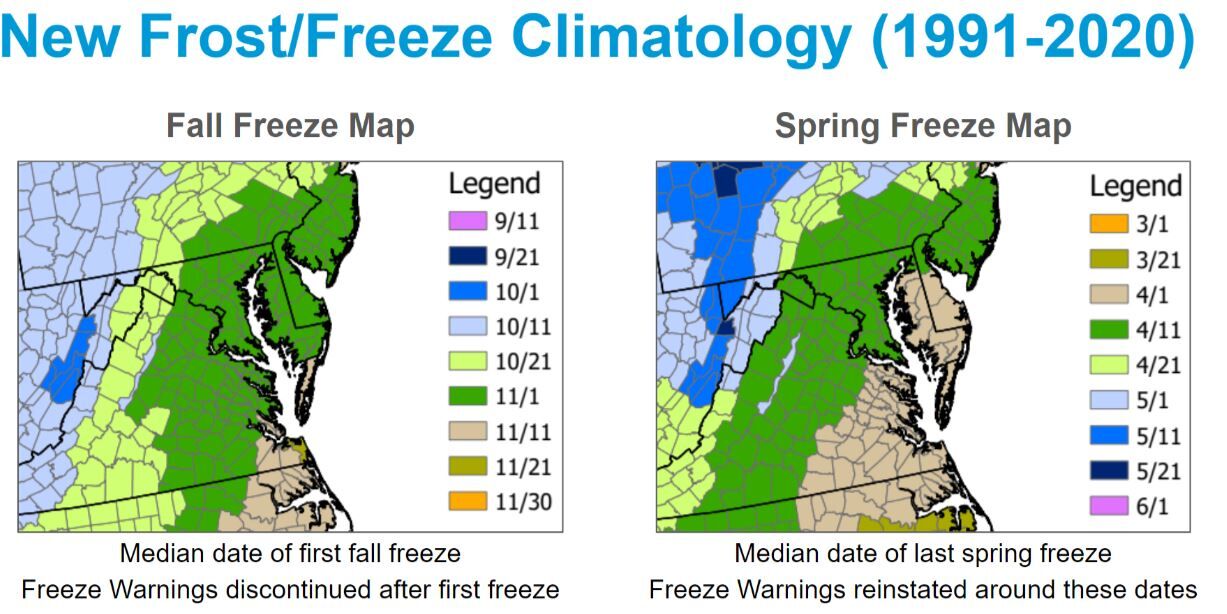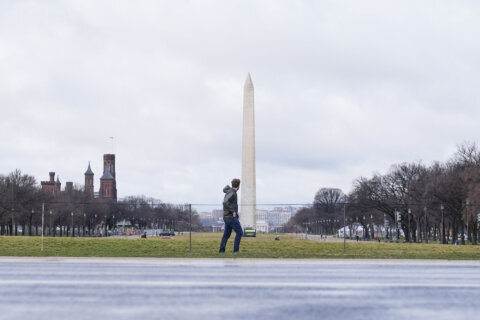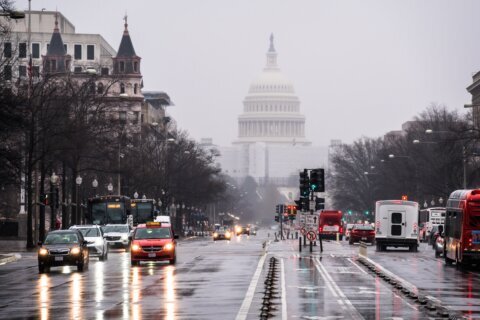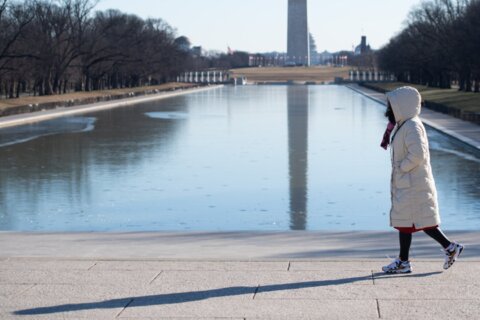With fewer hours of daylight and pumpkin spice’s takeover front of mind, fall is in full swing in the D.C. area. But freezing temperatures haven’t arrived to demand residents yank those puffy coats out of storage.
Here’s what you need to know about when the first frost is expected.
Every 10 years, the 30-year climate averages get updated by the National Oceanic and Atmospheric Administration. The current 1991-2020 data set has been used for a few years, but early this month, the local weather service updated the median date (date in the middle of the data set) for the first hard frost of the season and spring’s last hard freeze date.
For D.C., the frost that ends the growing season occurs on or about Nov. 1. This lines up with the first fall freeze date from the previous climate normal (1971-2000) of Oct. 29 to Nov. 5.
In Baltimore, Maryland, the median date for the season’s first hard frost is also Nov. 1. This hasn’t changed much from 20 years ago when the date was Oct. 29 to Nov. 5.

The National Weather Service will put out freeze watches and warnings until the first hard freeze occurs, which happens on clear, calm nights with temperatures of 28 degrees or colder. Temperatures that cold end the growing season, even for hearty plants.
There’s a fly in the ointment. If we don’t see a killing frost by Nov. 15, the weather service will declare the growing season over. This happens by default because all vegetation becomes dormant thanks to lack of sunlight that shuts down the photosynthesis process in plants. Freeze watches and warnings will not be issued after Nov. 15 — even if the temperature drops for the first time of the fall season to 28 degrees or colder.
The median date for the last spring freeze in D.C. and Baltimore is April 11. Typically, after this date, vegetation is in bloom and temperatures at or below 28 degrees would be detrimental to the development for the growing season.
While the D.C. area has chilly temperatures in the forecast on occasion through the next two weeks, the Interstate 95 corridor is not expected to see a killing frost.
Get breaking news and daily headlines delivered to your email inbox by signing up here.
© 2024 WTOP. All Rights Reserved. This website is not intended for users located within the European Economic Area.








